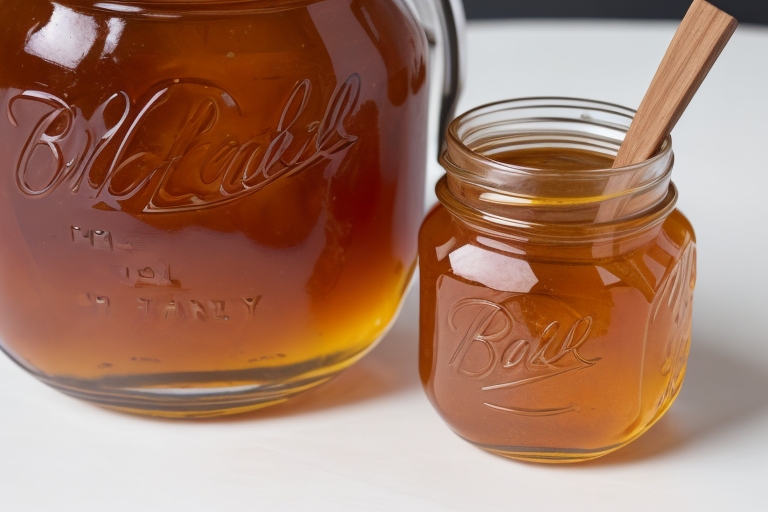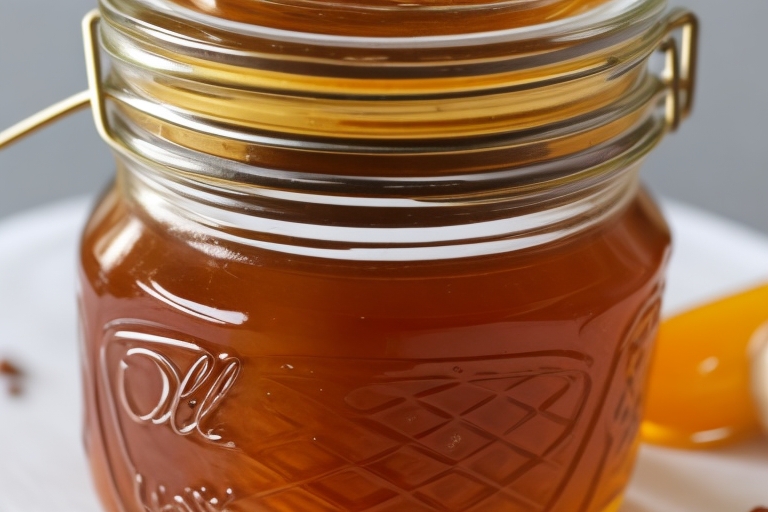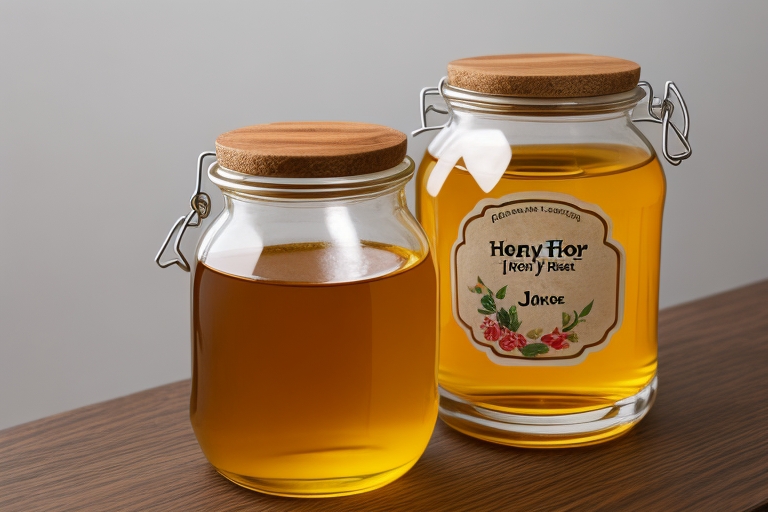
The phenomenon of honey crystallizing or going hard in the jar is a common occurrence that often puzzles consumers. Many individuals have experienced the confusion of reaching for a jar of honey, only to find its once smooth, liquid consistency transformed into a grainy or solid state. This natural process can lead to questions about the honey’s quality and whether it is still suitable for consumption.
Understanding why honey crystallizes is crucial for both consumers and producers. The crystallization of honey is a natural and reversible occurrence, influenced by factors such as temperature, floral source, and the ratio of glucose to fructose in the honey. Recognizing these factors allows consumers to appreciate that crystallization is not a sign of spoilage or poor quality. Instead, it is a testament to the raw and unprocessed nature of honey, showcasing its unique properties.
In essence, demystifying the process of honey crystallization promotes a better appreciation for the diverse characteristics of this natural sweetener and helps consumers make informed choices about the honey they purchase and consume.
What causes honey to harden?
Honey, a delightful creation of bees, begins its journey as they collect nectar from flowers. Once gathered, the bees enzymatically transform the nectar into honey, a natural sweetener cherished by humans for centuries.
The composition of honey is a delicate blend of water, various sugars—predominantly glucose and fructose—and additional compounds like pollen, enzymes, and minerals. The ratio of these sugars plays a significant role in determining the texture and consistency of honey.
Glucose, a key player in the crystallization process, tends to form solid crystals more readily than fructose. When the concentration of glucose in honey surpasses its solubility limit, it begins to separate from the water content and crystallize. The crystallization process results in the formation of tiny sugar crystals, giving honey a granulated or hardened texture.
It’s important to note that honey crystallization is a natural and reversible phenomenon. The speed and extent of crystallization depend on factors like temperature and the specific floral sources contributing to the honey. While some may prefer the liquid form, the crystallized version of honey holds the same nutritional value and maintains its exquisite flavor profile.
In essence, honey’s tendency to harden is a testament to its pure and unprocessed nature, showcasing the dynamic interplay of sugars and natural elements that make it a unique and diverse sweetener.
Factors influencing honey crystallization

The crystallization of honey is a dance choreographed by temperature, with cooler environments taking the lead in this natural phenomenon. When honey is exposed to lower temperatures, its composition nudges it toward crystallization, causing the once liquid gold to take on a more solid form.
Certain types of honey are more inclined to crystallize due to their distinct ratios of glucose to fructose. Honey varieties with a higher glucose content are more prone to forming crystals. This intrinsic characteristic makes them more likely candidates for experiencing that delightful transformation into a spreadable, crystallized state.
The impact of temperature on honey’s texture is a delicate balance. Warmer temperatures, on the other hand, encourage honey to maintain its liquid form, allowing it to gracefully flow from the jar. However, the moment honey finds itself in a cooler environment, it may decide to put on its crystal costume.
In essence, the crystallization of honey is a temperature-driven spectacle, and the unique composition of different honey varieties adds a touch of individuality to this delightful transformation. Embracing the crystallization process allows honey enthusiasts to appreciate the diverse textures and flavors that nature’s sweetener has to offer.
How to prevent or reverse honey crystallization
Preventing or reversing honey crystallization is a straightforward task, and a little TLC can keep your honey in its preferred state. To thwart the crystallization process, store your honey at room temperature. Avoid the temptation to tuck it away in the fridge, as cooler temperatures are catalysts for the formation of those charming crystals.
If your honey has already taken on a solid form, fear not. Reversing crystallization is as simple as a warm embrace. Gently heat the crystallized honey by placing the jar in warm water. The gentle warmth will coax the crystals back into their liquid state, restoring the honey’s smooth and pourable consistency.
It’s essential to note that honey crystallization is a natural occurrence and doesn’t signal a decline in quality or safety. In fact, crystallized honey retains all its nutritional benefits and flavor. So, whether your honey is in a liquid or crystallized state, rest assured that it’s still the golden treasure you know and love.
Benefits Of Avoiding Hardened Honey In The Jar

While the crystallization of honey is a natural and reversible process that doesn’t compromise its quality, some individuals prefer to enjoy honey in its liquid state. Here are a few benefits associated with avoiding hardened honey in the jar:
- Ease of Use: Liquid honey is convenient for drizzling over foods, stirring into beverages, or spreading on toast. It provides a smoother and more effortless application compared to crystallized honey.
- Versatility in Recipes: Liquid honey seamlessly incorporates into recipes, blending evenly with other ingredients. This versatility makes it a preferred choice for culinary endeavors, such as salad dressings, marinades, and baking.
- Immediate Enjoyment: Liquid honey is ready to be enjoyed without the need for additional preparation. It’s perfect for those who prefer the instant gratification of a pourable and ready-to-use sweetener.
- Aesthetic Appeal: Liquid honey often has a visually appealing, glossy appearance. This can be particularly desirable when using honey as a topping or garnish, enhancing the visual appeal of dishes.
- Dipping and Drizzling: For activities like dipping fruits or drizzling honey on desserts, a liquid consistency is preferred for a seamless and delightful experience.
It’s important to remember that whether honey is in a liquid or crystallized form, it still retains its nutritional value and unique flavor profile. The choice between liquid and crystallized honey ultimately comes down to personal preference and the intended use in various culinary applications.
FAQs
- Why does honey crystallize in the jar?
- Honey contains natural sugars, primarily glucose and fructose. Over time, these sugars can form crystals, causing the honey to go from a liquid to a more solid state.
- Is crystallized honey still safe to eat?
- Yes, crystallized honey is perfectly safe to eat. In fact, some people prefer it in its crystallized form. You can return it to a liquid state by gently warming it, but avoid excessive heat to preserve its natural properties.
- What factors contribute to honey crystallization?
- Temperature plays a significant role. Honey is more likely to crystallize at lower temperatures. The type of flowers the bees collect nectar from, as well as the ratio of glucose to fructose in the honey, also influence crystallization.
- Can I prevent honey from crystallizing?
- While you can’t entirely prevent crystallization, storing honey at higher temperatures (above 50°F or 10°C) can slow down the process. Additionally, choosing raw and unfiltered honey, as well as minimizing temperature fluctuations, may help delay crystallization.
- How do I return crystallized honey to its liquid state?
- To re-liquefy honey, gently warm the jar in a bowl of warm water or use a microwave on low heat, stirring occasionally. Avoid overheating, as excessive heat can damage the honey’s natural enzymes and beneficial compounds.

Pingback: Top 5 Best Honey Jars with Dippers reviews -2023
Pingback: Do Honey Jars Need To Be Sealed?